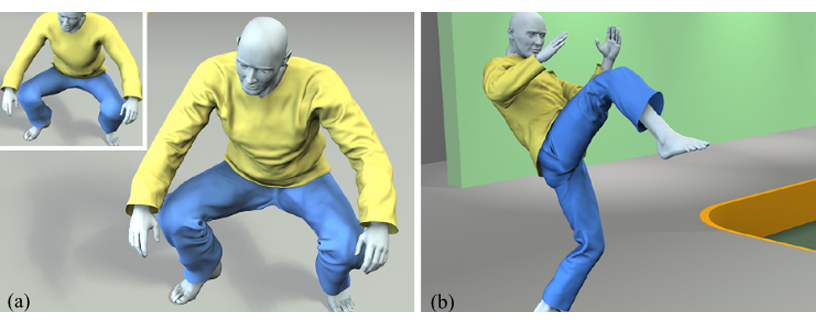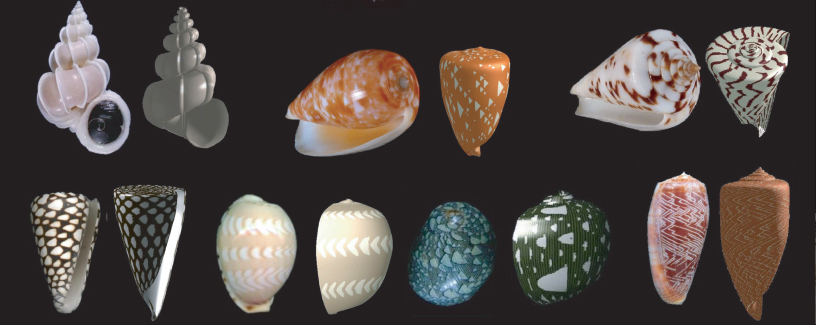Nothing Found
Sorry, what you are looking for isn't here.
The Goldberg Lab is designing, prototyping, and evaluating systems that will steer flexible needles from outside the body through deformable tissues to reach specified 3D anatomical targets. Our approach integrates real-time imaging, adaptive modeling and planning, and image-guided intraoperative needle control.

Mating Odondtodactylus cultrifer. Recently we have shown that stomatopods in the genus Odontodactylus can detect and distinguish between right and left circularly polarized light. They also have patches of cuticle on their telsons that produce a circularly polarized signal. Studies in the Caldwell lab are examining how this very private communication system functions.

Our method uses a precomputed dataset to synthesize detailed cloth wrinkles (a) that are layered onto a coarse base simulation (inset). The precomputed datset can be used to synthesize wrinkles for a wide range of poses (b). <i>Huamin Wang, Florian Hecht, Ravi Ramamoorthi, and James F. O’Brien. “Example-Based Wrinkle Synthesis for Clothing Animation“. In Proceedings of ACM SIGGRAPH 2010, pages 107:1–8, July 2010.

The Poly-PEDAL Lab at UC Berkeley studies the Performance, Energetics and Dynamics of Animal Locomotion. Directed by Robert Full, the lab explores the remarkable capabilities of many-footed animals (Poly-). The lab’s theme is Diversity Enables Discovery.

Advanced embryo of Ichthyophis kohtaoensis (Ichthyophiidae: Gymnophiona: Amphibia). These animals, because of their derived morphologies, are being investigated by Marvalee Wake in terms of the biomechanics of their feeding and locomotion, the functional integration of neural systems before, during, and after metamorphosis, and several other aspects important to understanding the evolution of their biology. Photo by Adam Summers.

The Brain-Machine Interface Lab explores the BMI paradigm – a powerful tool that allows investigating sensorimotor learning and control with both natural and prosthetic limbs. At the heart of this paradigm lies the volitional control of neural activity.

CiBER Faculty research by George Oster. The shells of the left are real shells; those to their right are generated by the neural net model.
Boettiger, A., B. Ermentrout, G. Oster.(2009) The neural origins of shell structure and pattern in aquatic mollusks. PNAS 106:6837-6842.

Professor Daniel Fletcher’s lab researches Cell Mechanics and Disease. The intestinal pathogen Giardia lamblia uses a unique ventral disk to form strong attachments to surfaces.

CiBER-IGERT Trainee Carlos Oroza designs robotic sensors which operate in dynamic environments and is interested in design and control of aquatic-sensor robots.

Robert Full studies the biomechanical properties of geckos which has inspired Ron Fearing’s work on artificial adhesive. The right images show: Combined Lamellar Nanofibrillar Array (Oct. 2009). Lamellar structures act as base support planes for high-aspect ratio HDPE fiber arrays. Nanofiber arrays on lamella can adhere to a smooth grating with 5 times greater shear strength than flat nanofiber array.

Sorry, what you are looking for isn't here.
Use the form below to search the site:
Still not finding what you're looking for? Drop a comment on a post or contact us so we can take care of it!
A few highly recommended friends...
All entries, chronologically...